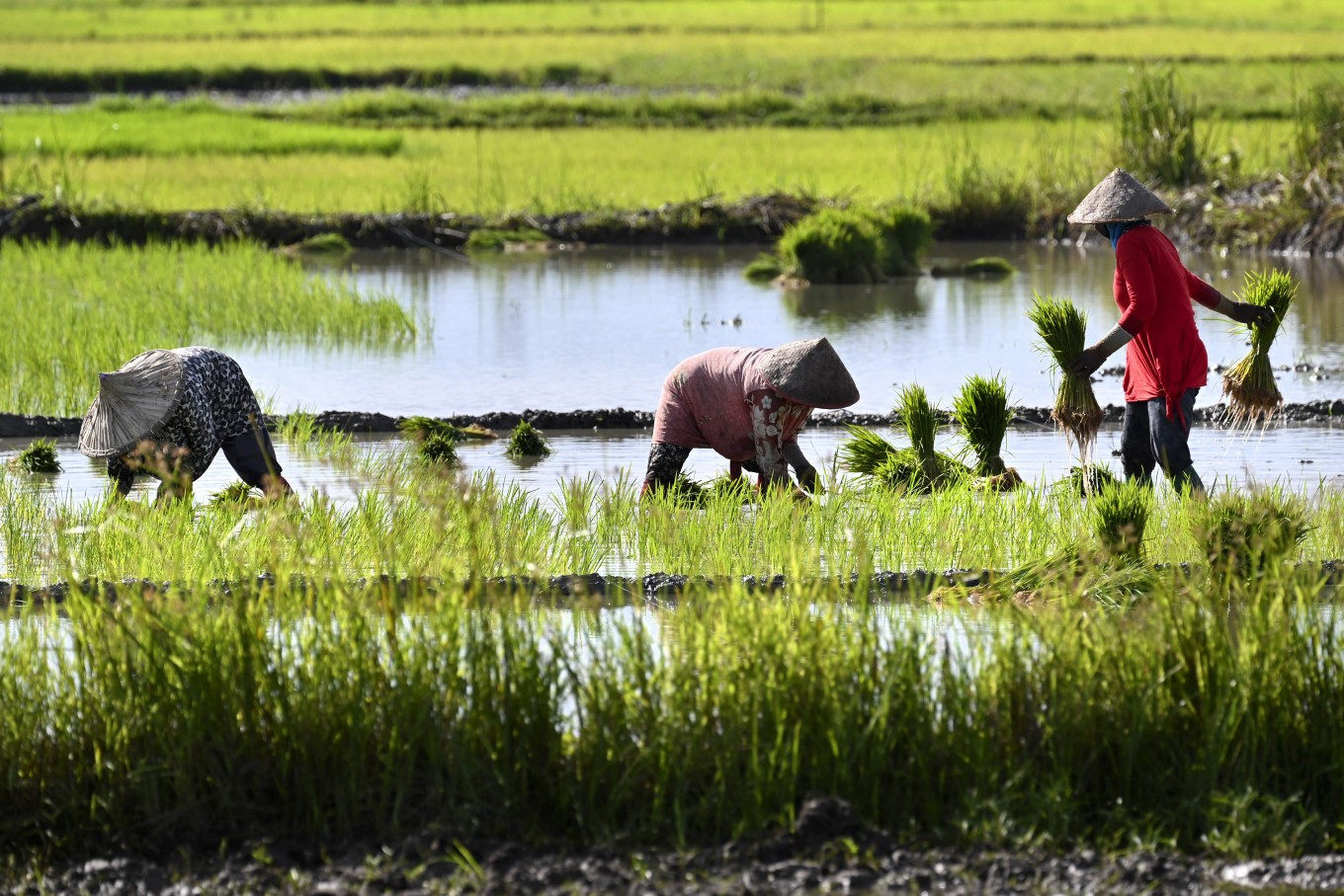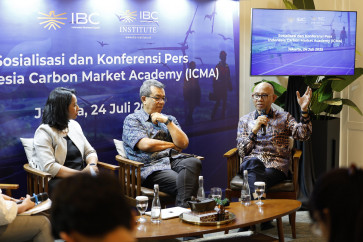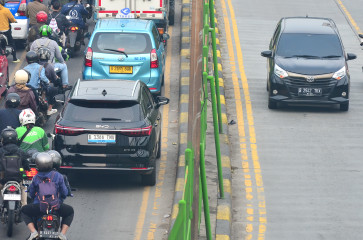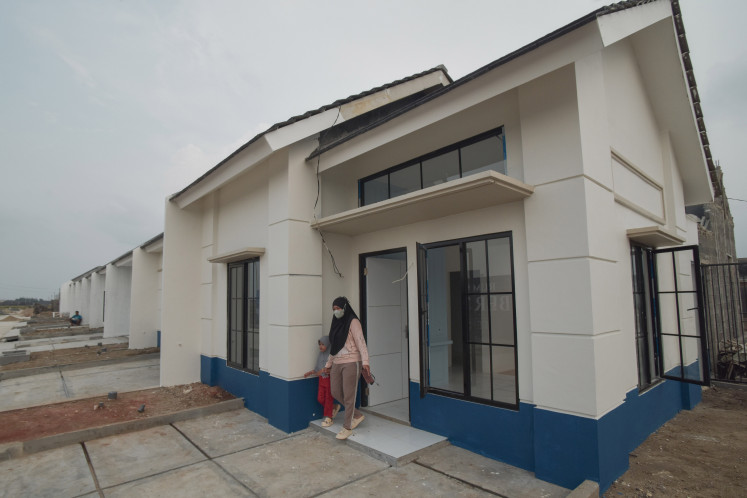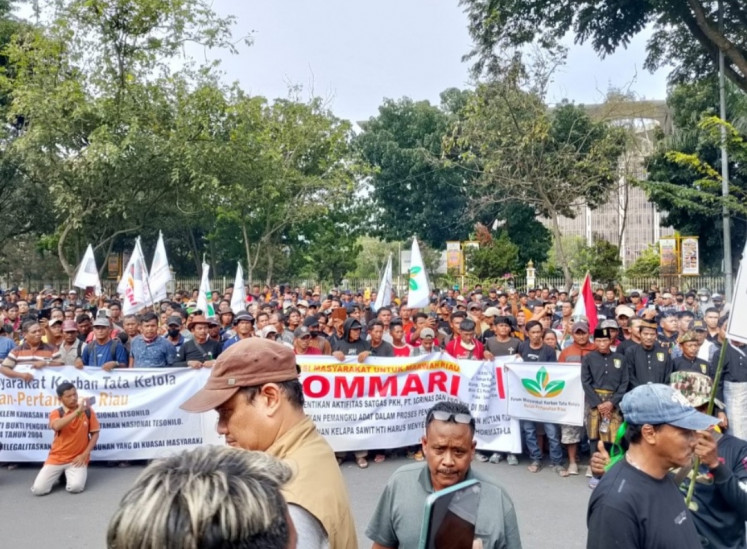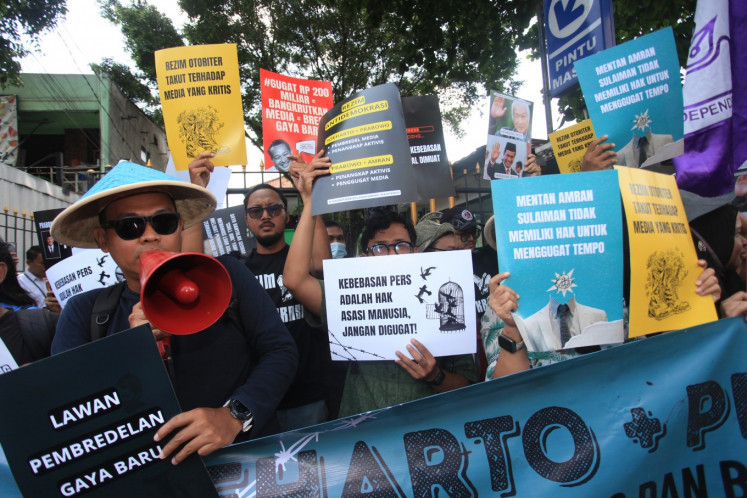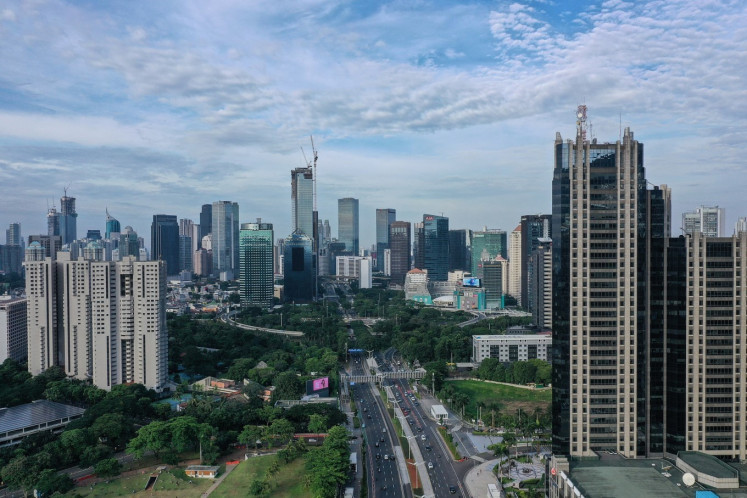Popular Reads
Top Results
Can't find what you're looking for?
View all search resultsPopular Reads
Top Results
Can't find what you're looking for?
View all search resultsRice self-sufficiency and the future of Indonesia’s food sovereignty
Indonesia may have fertile land and modern technology, but lacks the human capital to sustain food sovereignty as the young generation sees farming as low-status and low-return.
Change text size
Gift Premium Articles
to Anyone
R
ice is more than a staple in Indonesia. It is the daily meal of millions, the rhythm of the countryside and a barometer of political stability.
For decades, governments have placed rice self-sufficiency at the center of food policy—not out of nostalgia, but because sovereignty demands it. Relying on imports for staple foods leaves a country exposed to global price shocks, export bans and climate-driven harvest failures abroad.
For Indonesia—where rice is both cultural heritage and household anchor—such exposure would quickly translate into social unease and policy constraints at home. Ensuring a reliable, affordable domestic rice supply is therefore a prerequisite for resilience: economic, social and geopolitical.
The role of rice is both practical and symbolic. Scarcity has often been followed by unrest, while abundance fosters calm. Rice is not just another commodity; it is the backbone of food security and a pillar of independence.
Critics who claim rice cultivation is inefficient often fail to see its broader role. Beyond economics, rice represents legitimacy, sovereignty and continuity.
To protect this backbone, modernization is essential. Irrigation rehabilitation, high-quality seeds, better agronomy, farmer institutions and climate-resilient practices must be pursued. A modern rice sector is not incompatible with fiscal prudence or sustainability. In fact, investments in efficiency and resilience are the key to reconciling economic stability with environmental responsibility.
Staple foods often decide the fate of governments. Leaders have risen and fallen on their ability to guarantee food supplies. In Indonesia, rice has long been political currency. Scarcity invites unrest, while stability secures legitimacy. Looking forward, rice may even become an exotic commodity, no longer universally abundant but prized in global markets as diets diversify and climate shifts alter production patterns.
Climate change could accelerate this transformation. One can imagine countries like the United Kingdom cultivating rice as warming opens new agricultural frontiers. This scenario would fundamentally alter the global rice landscape, redistribute influence and introduce new competitors. The lesson is clear: Managing rice is managing political legitimacy.
Indonesia cannot rely on rice alone. Its archipelagic geography provides cassava, maize, sweet potato, sago, taro and sorghum each adapted to different ecologies and cultural traditions. Developing these crops alongside rice will broaden food security, reduce fiscal pressure on any single commodity and promote dietary diversity.
The goal is carbohydrate self-sufficiency. Rice will remain the anchor, but local staples will serve as regional pillars: Cassava in drylands, sago in swampy eastern regions, sweet potato in highlands, maize in mixed farming systems. This approach will create a more balanced, shock-resistant national food system.
At the heart of food sovereignty are farmers. Yet many young Indonesians see farming as low-status, low-return and physically demanding. If this perception persists, Indonesia may have fertile land and modern technology but lack the human capital to sustain sovereignty.
Making farming attractive again requires dignified incomes, access to credit and insurance, secure markets and modern workplaces. Mechanization and digital tools from precision planting to mobile extension services can transform farming into a career of innovation. Agriculture must be framed as nation-building, not as a last resort. Without generational renewal, even the most advanced strategies will falter.
The climate crisis compels innovation. Future rice varieties must resist disease, require less water, withstand saline soils and minimize carbon emissions. Seeds must be climate-smart, ensuring resilience with low environmental impact. Fertilizers and pesticides must be environmentally friendly, irrigation systems must conserve water and post-harvest practices must minimize waste.
Equally important is building a circular economy around rice. Byproducts such as husks, bran and straw can be converted into energy, animal feed or industrial materials. This not only reduces waste but creates new value chains.
With such an ecosystem, entirely new products and methods will emerge. Vertical farming, layered agriculture and urban farming will expand production without consuming additional land.
Indonesia spends heavily on rice subsidies, but too often they provide short-term relief instead of lasting improvements. To build long-term strength, resources must be redirected to irrigation modernization, seed research, farmer cooperatives and better governance.
At the same time, investments in non-rice staples are essential: rural infrastructure to connect markets, cold chains for perishable goods and R&D tailored to local crops. The aim is not to diminish rice, but to lift the entire food system. Food sovereignty requires a strong backbone, but also a resilient body.
Indonesia’s diversity is an asset, not a barrier. Eastern Indonesia’s sago, Sulawesi’s cassava and Papua’s sweet potatos are more than regional traditions. They are national endowments. By elevating these local crops into the national strategy, Indonesia affirms cultural pride while creating opportunities close to communities.
When regional staples are woven into the national food system, sovereignty becomes a project of unity. Local ecosystems and traditions are respected, while supply chains and standards integrate them into a coherent whole. Properly managed, diversity strengthens rather than fragments.
Indonesia’s journey with rice is a story of persistence. On April 27, 1952, President Sukarno inaugurated the Faculty of Agriculture at the University of Indonesia, now Bogor Agriculture University, and declared that “food is the life and death of the nation”. Yet by 1965, Indonesia had still not achieved self-sufficiency.
It was only in 1969 with the launch of the First Five-Year Development Plan (Repelita I) prepared by the National Development Planning Agency (Bappenas) that a structured rice program began. Fifteen years later, in 1984, Indonesia achieved self-sufficiency, an achievement recognized by the Food and Agriculture Organization (FAO) in 1985. This history underscores that food security is not achieved overnight. It is built through vision, persistence and policy commitment across generations.
Indonesia’s future rests on two pillars: rice self-sufficiency as the foundation of stability and sovereignty, and carbohydrate diversity as the source of resilience. This dual approach offers balance, independence and confidence in the face of global shocks.
But policies and budgets alone will not suffice. Food sovereignty depends on farmers, especially young farmers, who embrace agriculture as a dignified, modern and rewarding profession.
Anchored in rice, enriched by diverse staples, strengthened by technology and sustained by empowered farmers, Indonesia can face the future with stability, pride and sovereignty.
***
The writer is Deputy National Development Planning Minister and vice chairman for international relations at the Indonesian Farmers Association. The views expressed are personal.

